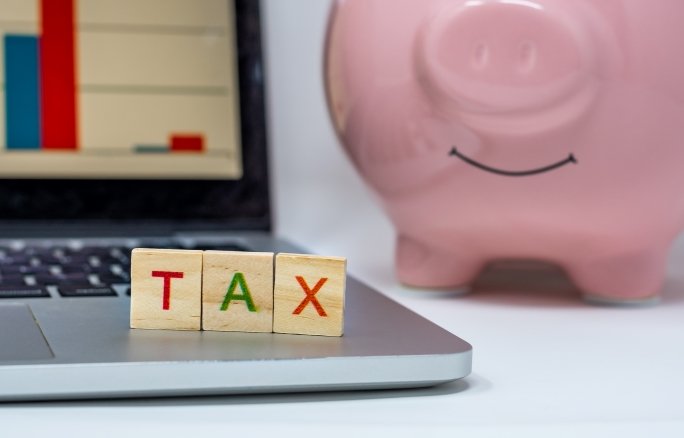In the UK, the tax system can seem daunting, especially when it comes to understanding tax codes and how they impact your income. For most taxpayers, the tax code is the key to how much tax they will pay, and it is crucial to ensure that it is accurate. One of the most commonly encountered tax codes is 1257l, which many employees will see on their payslips and tax documents.
Tax codes in the UK determine how much income tax is deducted from your wages, pensions, or other income sources. If you’ve ever wondered about your tax code or why it’s important, you’re not alone. Understanding tax codes, especially 1257l, is essential for ensuring you are taxed correctly. The tax code not only helps calculate your income tax but also reflects your personal allowance, which is the amount of income you can earn before paying tax.
This article will explain everything you need to know about Tax Code 1257l, from what it means, how it affects your income and how it compares to other codes. By the end of this guide, you’ll be equipped to interpret your tax code, understand how it works, and ensure you’re not paying too much or too little tax.
Table of Contents
ToggleWhat is Tax Code 1257l in the UK?
Tax codes are assigned by Her Majesty’s Revenue and Customs (HMRC), and each code is designed to reflect an individual’s tax status. 1257l is one of the most common tax codes for employees in the UK. To understand what 1257l means, let’s break it down:
- The “1257” part refers to the personal allowance amount, which is the amount of income you are allowed to earn each year without being taxed.
- The “L” at the end simply indicates that the individual is eligible for the basic personal allowance.
Personal Allowance and 1257l
The personal allowance is the threshold amount of income that an individual can earn without paying any tax. For the tax year 2024-2025, the personal allowance is set at £12,570, but this figure can be adjusted for individuals who receive certain benefits, have additional income, or are subject to other tax considerations. In tax code 1257l, the number “1257” directly corresponds to £12,570, meaning that you can earn this amount before being taxed.
The L at the end signifies that you are receiving the full personal allowance (i.e., the standard tax-free amount). Other letters in a tax code can indicate adjustments or specific allowances, but L is used for those receiving the full standard personal allowance.
How Does Tax Code 1257l Affect My Income?
The 1257l tax code has a direct impact on how much tax is deducted from your wages. In the Pay As You Earn (PAYE) system, your employer uses the tax code to calculate the amount of tax to deduct from your salary.
Let’s take an example:
- Salary: £30,000 per year
- Personal Allowance: £12,570 (as per 1257l)
With Tax Code 1257l, the first £12,570 of your income is tax-free. The remaining income is subject to tax based on the applicable income tax rates. For a salary of £30,000, here’s how the calculation would work:
- Taxable Income: £30,000 – £12,570 (personal allowance) = £17,430
- Income Tax:
- The first £12,570 is tax-free.
- The remaining £17,430 is subject to income tax at the basic rate of 20%.
- The first £12,570 is tax-free.
- So, you would pay 20% tax on £17,430, which equals £3,486 in tax.
Using Tax Code 1257l ensures that only the taxable income is taxed, which helps reduce the amount of tax you pay. This is a significant benefit for employees, as it ensures that the first portion of their income is tax-free.
Comparing Tax Code 1257l with Other Tax Codes
To better understand Tax Code 1257l, it’s helpful to compare it to other common tax codes. These comparisons will highlight how 1257l stands in relation to codes like 1250l, 1150l, 1263l and 1300l.
1257l vs 1250L
- 1257l: As explained, 1257l gives you a personal allowance of £12,570.
- 1250l: This is similar, but the personal allowance is slightly lower, at £12,500. The difference is small but could impact individuals who have additional deductions or adjustments in their tax affairs.
1257l vs 1150L
- 1150L: This code provides a personal allowance of £11,500. It is typically assigned to individuals whose income is adjusted due to receiving certain benefits or having other tax liabilities, such as owing previous tax payments or adjustments for things like marriage allowance.
1257l vs 1300L
- 1300l: This code provides a larger personal allowance of £13,000. It may be assigned to individuals who qualify for additional allowances or tax benefits, such as blind persons’ allowance or income from a charity.
In all these cases, the key difference lies in the personal allowance—the higher the number in the tax code, the higher the tax-free income you are entitled to earn before any tax is deducted. For most individuals with standard circumstances, 1257l is the standard tax code, but those with specific allowances or adjustments will see different numbers.
Understanding Personal Allowance and the 1257l Tax Code
The personal allowance is a vital concept in the UK tax system. It is the amount of income that you can earn each year without having to pay income tax. For most people, the personal allowance for the tax year 2024-2025 is £12,570, which is reflected in the 1257l tax code.
However, certain factors can affect your personal allowance, including:
- Income above £100,000: If your income exceeds £100,000, your personal allowance starts to decrease. For every £2 you earn over £100,000, you lose £1 of your personal allowance. This means that high earners could end up with little to no personal allowance.
- Adjustments for benefits or other allowances: If you qualify for certain allowances (e.g., marriage allowance), your personal allowance may increase, which can be reflected in a higher tax code (e.g., 1300L).
For individuals using 1257l, the tax-free amount is fixed at £12,570, unless there are specific adjustments made by HMRC based on the individual’s financial situation.
How to Read Your Tax Code
Reading and understanding your tax code can be confusing, but it’s essential for ensuring you are paying the correct amount of tax. Here’s a simple guide to understanding your tax code:
- The number (e.g., 1257): This reflects the amount of personal allowance you receive. Multiply this number by 10 to get the tax-free income amount. For 1257l, this means a personal allowance of £12,570.
- The letter (e.g., L): This indicates the type of personal allowance you receive. L indicates the basic personal allowance. Other letters could indicate specific tax situations, such as M for marriage allowance or N for no personal allowance.
You can check your tax code by looking at your payslip or P60, or you can check online via your HMRC personal tax account.
Why Is Tax Code 1257l Important for Tax Calculations?
Having the correct tax code is crucial because it ensures that the right amount of tax is deducted from your earnings. Tax Code 1257l helps prevent underpayment or overpayment of tax by reflecting your personal allowance correctly.
HMRC uses your tax code to calculate your tax liability, and they will update it if necessary. Using the correct tax code reduces the chances of receiving a tax bill at the end of the year. It is also important because, without the correct code, you could end up paying too much tax, which would then require you to claim a refund.
What to Do If Your Tax Code is Incorrect
Mistakes can happen, and your tax code may be wrong. If you think you’re on the wrong tax code, you should:
- Check Your Tax Code: Review your payslip or P60 to see the tax code you’ve been assigned.
- Contact HMRC: If your tax code appears to be incorrect, you can contact HMRC to discuss your tax code and get it corrected.
- Review Your Income and Benefits: Changes in income, benefits, or other circumstances can affect your tax code. Make sure these are accurately reflected in your tax records.
If HMRC has made an error, they can issue a correction and ensure that you’re taxed correctly going forward.
FAQ
What is Tax Code 1257L?
Tax Code 1257L is the most common tax code used in the UK. It reflects the standard personal allowance for the tax year, which is £12,570. The number 1257 refers to the amount of income you can earn tax-free, while the letter L signifies that you are eligible for the basic personal allowance.
How Does Tax Code 1257L Affect My Income Tax Percentage?
The Tax Code 1257L itself does not represent a percentage but relates to the amount of income that is tax-free under the personal allowance. With Tax Code 1257L, you are allowed to earn £12,570 before you begin paying tax. Any income above that threshold will be taxed at the basic income tax rate of 20%, unless other circumstances apply (such as higher rates for income over £50,000).
What Does Tax Code 1257L M1 Mean?
When you see Tax Code 1257L M1 (Month 1), it means that your tax code is being applied on a non-cumulative basis for that particular pay period. This can happen if you’re starting a new job or have a new payroll system. Under M1, your tax calculations do not take previous earnings or adjustments into account. Therefore, tax is calculated based on only the current period’s income, rather than accumulating over the year.
How Does HMRC Assign Tax Code 1257L?
HMRC (Her Majesty’s Revenue and Customs) assigns Tax Code 1257L to individuals who are entitled to the full personal allowance. It is based on your income and circumstances as reported to HMRC. If you earn £12,570 or less, you would typically receive Tax Code 1257L. However, if there are changes in your income or tax situation, HMRC may adjust your tax code accordingly.
You can check your tax code through your payslip, P60, or by logging into your HMRC personal tax account.
What is the Difference Between Tax Code 1257L Cumulative and Non-Cumulative?
1. Cumulative Tax Code: This is the standard method of calculating tax. It means your tax deductions are based on the cumulative total of your earnings throughout the year. If you’re on Tax Code 1257L with cumulative status, your personal allowance is spread over the entire year, and HMRC will adjust your tax code if you have overpaid or underpaid tax.
2. Non-Cumulative Tax Code (e.g., 1257L M1): If your tax code is applied on a non-cumulative basis, such as with M1 (Month 1), only the current period’s income is considered, and there is no carryover of adjustments from previous periods. This often happens when you start a new job or if your employer has made changes to the PAYE system.
If you have a non-cumulative tax code, it’s important to check whether any overpayments have occurred and whether you’ll need to receive a refund later.
Conclusion
Tax Code 1257l is an essential part of the UK tax system, ensuring that individuals can benefit from the full personal allowance and avoid overpaying tax. It’s crucial for taxpayers to understand their tax code and ensure it is correct to avoid any tax issues. If you’re unsure about your tax code or believe it may be incorrect, reach out to HMRC or use their online tools to check and update your code.
For more information on tax codes and personal allowances, visit HMRC’s official website or consult with a professional tax advisor. By staying informed, you can make sure your tax payments are accurate and avoid surprises down the line.





